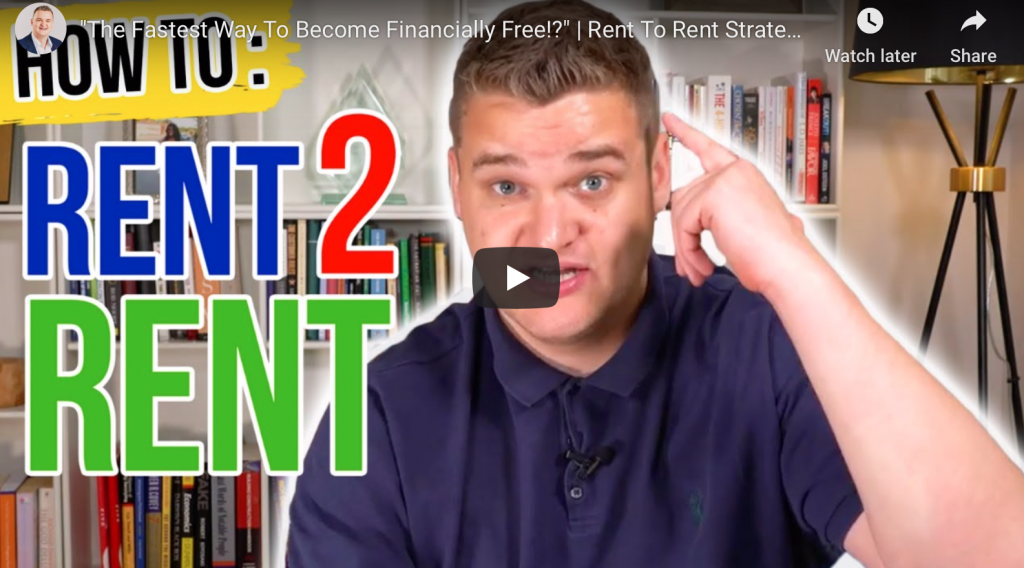How to analyse Rent to Rent deals!
I'm a property entrepreneur and not only do I make a lot of money in property, but also put out YouTube videos, have a training company, and teach people on property management as well.
A lot of my success students start off making their money using a strategy called rent to rent.
With rent to rent, you can make a lot of money but like any other business, rent to rent requires a product and a customer. In this case, your product is your house and your customer is your tenants.
When in business, you need to crunch your numbers, you need a business plan, and you need to do it properly.
The purpose of this blog is to give you guys insight in terms of how to be able to analyze your investment and to work out if it's a good investment or not.
Just because it's a rent to rent deal, it might also be full of loses and if it's not going to make any profit, then that's not a good investment. Or, if you're going to be putting loads of money into it, well, maybe it would be worth it just investing in buying a house.
As a disclaimer, if you want to be a serious business owner and grow your property portfolio fast, I think you need to get trained properly.
People tell me that I only say this because I run a training company.
Well, I have a training company because it's important and got trained by going to these programs by myself.
Probably the best place to start in is in the property investors crash course which is free and offers advanced training as well.
I think training is very important and for those people that maybe have got a deal now or you're about to get a deal and you are still wondering whether you should get it or not, this blog is going to be helpful as I'm going to give to you as much value as I can.
 Rent to rent is when you take control of a property, you pay a guaranteed rent to the landlord, and then, you rent the property out by yourself. And by this, I mean that you take control of the property on a management contract or corporate let, and then you rent it out.
Rent to rent is when you take control of a property, you pay a guaranteed rent to the landlord, and then, you rent the property out by yourself. And by this, I mean that you take control of the property on a management contract or corporate let, and then you rent it out.
Let's say, you're paying the landlord a thousand pounds a month, but you're renting the property out for 2000 pounds a month.
The difference in prices is your profit.

I would never do a rent to rent deal unless I was making a 100% return on investment on the said deal.
When I'm investing in property, because I'm not just taking control of the property, I also own it and I'm benefiting from the rent which gives me cash flow and the capital appreciation. If I'm only getting 20% return on investment and that makes me happy, it means am not in total control of the investment.
When I’m taking control of something, I want 100% return investment.
And what does that mean?
It means that the much money you put down to get the rent to rent deal in terms of rent upfront, deposit to the landlord, furnishings, contracts and any fees associated with getting that setup, will determine how much profit you’ll make in this investment.
Let's say that the startup fee for the rent to rent is five thousand pounds.
That means you will be making a hundred pounds a month.
That's not impressive because a hundred pounds a month will total to one thousand two hundred pounds a year making you to only make a profit of 1200 pounds in the said year.
But remember that you invested five thousand pounds, which means it's going to take you years, maybe four or more to get your money back. You need to be able to get your money back in full during the first year of your investment.
That's a worst-case scenario and If you're going to put down five grand to get your rent to rent and furnishings and everything, you need to make at least 5,000 pounds profit in your first year to make the investment a worthy one.
So, how do you make an actual profit of five thousand pounds in the first year of your investment?
That means, you suddenly have got a 100% return on an investment after the first year and thereafter year two, three, four, five is all about your 5,000 pounds’ profits and if you can get back your investment after six months, that’s even better.
Next on, what's your monthly profit? And how do you work out the return on investment?
You need to look at it as if you're paying the landlord a thousand pound a month and you're charging 2000 pound a month to your tenants.
You might say, “Oh, I've got a thousand pounds a month profit!”
But in the actual sense, you've got a thousand pounds a month, with expenses to pay.
What are the expenses with rent to rent?
There's quite a lot of expenses.
You've got to pay the landlord, you've also got to pay if it's an HMO or if it's serviced accommodation, which will force you to increase the rent, you've got to pay for the council tax, gas and electric, you've got to pay for the WIFI, and with all of these bills, you need to know how much each of them is going to cost you.
 Depending with the house, an apartment or an Airbnb apartment might only cost you 250 pounds a month.
Depending with the house, an apartment or an Airbnb apartment might only cost you 250 pounds a month.
If it's a five-bed HMO, that might cost you five hundred pounds a month and you need to at least have a ballpark figure and always add on the conservative side when doing your figures.
This is not the time to be a rose-tinted glass as you need to look at the worst case. Don't be ridiculously pessimistic, but be fair and look at the worst case that might happen.
So, what are the running costs going to be on the property?
1.Management Fees
Management fees can be quite a lot because here's where you get trapped.
The management company will tell you that, “We charge 10%,” and you're like, “Great, 10%!” But, what you don't take into account is that, if it's an HMO, a five, six-bed HMO, they're not only going to charge you 10% of the rent but every time a new tenant moves in or moves out, they'll charge you a fee.
Usually, a tenant finder fee.
If you're in an area that’s a bit risky, and you've got tenants coming and going all the time, say every three to six months, you have to put into consideration at how long the tenants will stay, the management costs and the tenant find costs.
The next fee is the landlords’ management fees and bills such as maintenance.
I usually advise on sticking with 10% of the total rent.
If you're getting 2000 pounds, use 200 pounds for maintenance and the larger bills.
Always remember that there might be other little costs as well such as insurance.
It depends on who pays that and what deal you have.
2.Voids

The first couple of rooms might be a thousand pounds to the landlord. And the actual profit is that last room and if that last room isn't rented out, where is your profit?
Nowhere of course.
Just to break even, you've got to have five of the six rooms.
Will this make a profit even if one room is empty all of the time? How likely is it that this property is going to be full all of the time? If it's serviced accommodation and you're working on a 100% occupation, it might be that John down the road has serviced accommodation apartment and he had a hundred per cent occupancy rate.
But is that realistic? You've got to be realistic.
I might sound negative.
Believe me, I'm not being negative. I'm being realistic. And I and many of my students make a lot of money.
If the deal doesn't stack, don't try and force it to stack.
Find a deal that's more profitable where even when you're working on the worst-case figures, you're still making good profits.
Maintenance, voids, management, utility bills, and running costs. These are the things you need to look at alongside the landlords’ payment.
If after all these costs, you're left with a hundred pounds a month, that's not a good investment.
A lot of people with rent to rents manage it themselves, which does make it much more profitable, but then it's not completely passive and you've just got to factor how you want to do it.
 Once you've worked out all the expenses and then looked at what the total rent's is going to be, knock the expenses off of the rent, and you see the profit that's left.
Once you've worked out all the expenses and then looked at what the total rent's is going to be, knock the expenses off of the rent, and you see the profit that's left.Take the monthly profit, multiply it by 12, and that will give you a figure which will be your annual profit. Then look at your expenses that you're going to put down to get the rent to rent and if you're not going to make your money back within the first year, don't do the investment.
I hope this article has been helpful and If you have found it useful and would like to read more articles like this Click Here.





